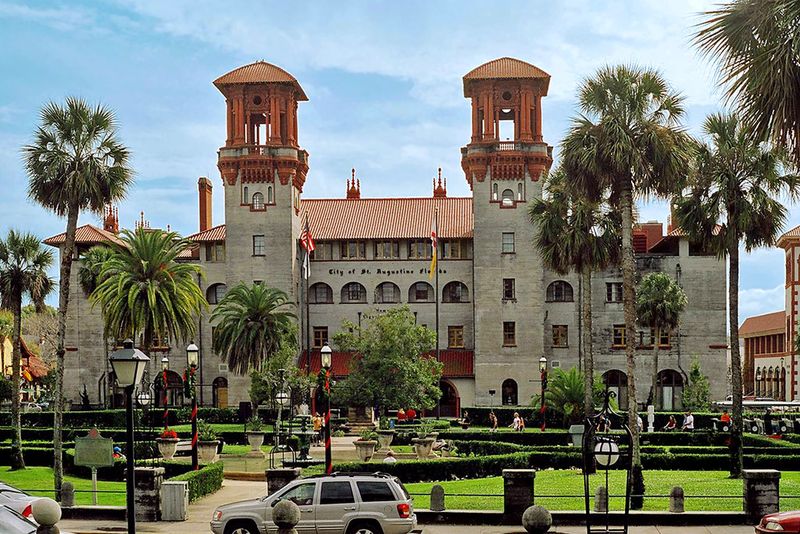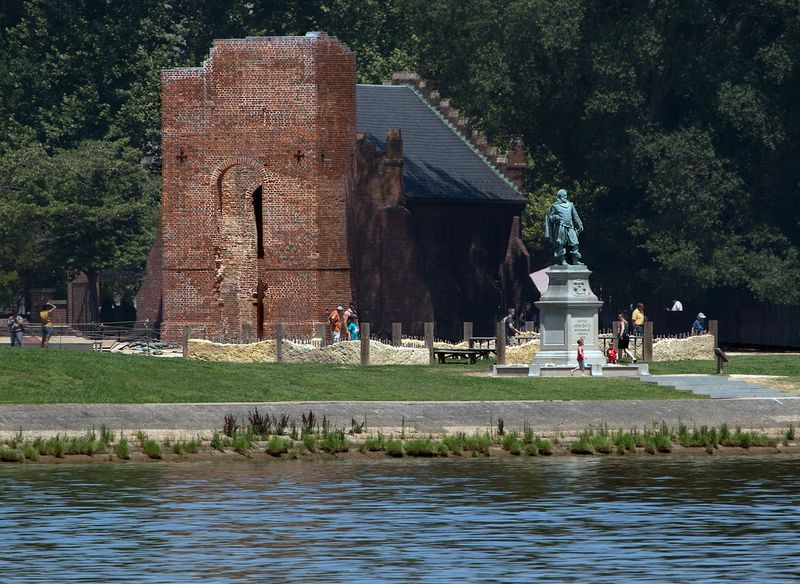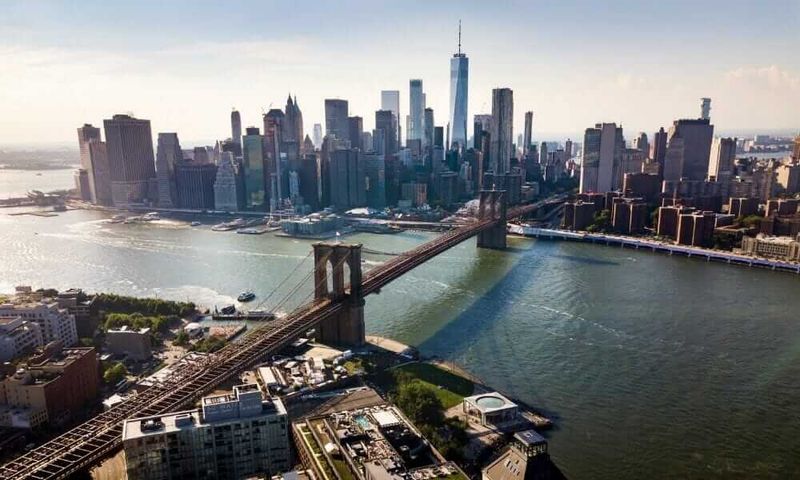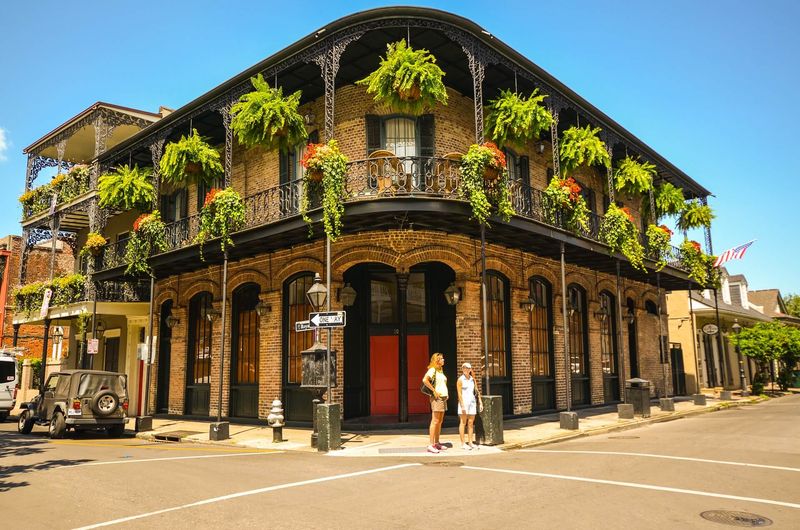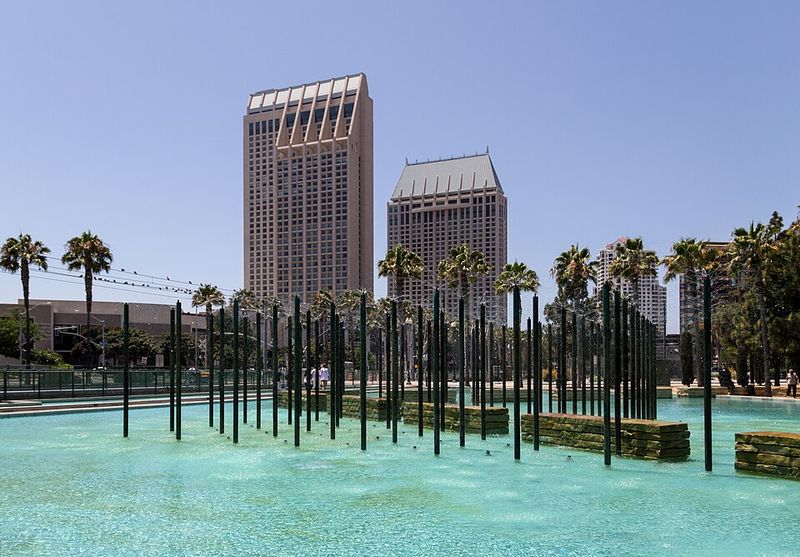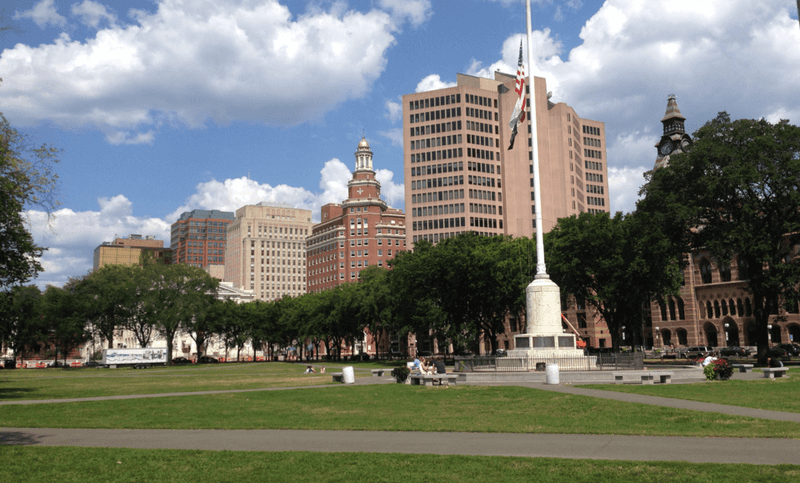America’s oldest cities look picturesque, but their foundations are stitched with battles, bones, and legends that refuse to stay buried. Beneath the cobblestones lurk secret tunnels, restless ghosts, and artifacts that rewrite the stories we tell ourselves. These places are museums you can walk through, yet they breathe like living things with memories of shipwrecks, sieges, and strange miracles. Ready to meet the cities that smile in daylight and whisper at night?
1. St. Augustine, Florida – The City That Won’t Stop Being Haunted
Founded in 1565, St. Augustine is the oldest continuously occupied European-established city on the continental mainland, and it acts its age. The Castillo de San Marcos reportedly crackles with phantom footsteps, drifting pipe smoke, and mysterious lights skimming coquina ramparts. Guides whisper that narrow lanes funnel echoes from centuries of soldiers, sailors, and mourning bells. Then there’s the Fountain of Youth park, where visitors sip sulfurous water under the shadow of mortality. Ponce de León never claimed the spring, yet the city adopted the myth with theatrical flair. Longevity in a cemetery-aged town feels ironic and perfectly St. Augustine.
2. Jamestown, Virginia – The Colony That Ate Itself
Jamestown, founded in 1607, carries one of America’s starkest origin stories. During the brutal Starving Time winter of 1609 to 1610, siege, disease, and desperation cornered the colony. Excavations revealed butcher marks on human remains, confirming survival cannibalism once dismissed as rumor. The bones told the truth no diary dared to frame fully. This English foothold persisted on faith, grit, and taboo acts that haunted later retellings. Today, interpretive centers render the evidence with clinical candor. Jamestown forces a hard question: how much darkness underwrites our earliest survival myths?
3. Santa Fe, New Mexico – Miraculous Staircases and Disappearing Builders
Santa Fe, founded in 1610, is a capital of sun, art, and inexplicable craftsmanship. In the Loretto Chapel, a nameless carpenter appeared after nuns prayed for a staircase to the choir loft. He built a double-helix spiral with no central support, using pegs instead of nails, then vanished without payment or farewell. Engineers explain its balance; nobody can name the builder. Devotees call him St. Joseph, patron of carpenters. Skeptics shrug and marvel anyway. The staircase rises like a wooden prayer coiled in midair, a miracle you can climb with careful steps and lingering questions.
4. New York City, New York – The City Built on Bones and Buried Ships
New York began as Dutch New Amsterdam in 1624, then expanded skyward while forgetting what lay below. Crews have uncovered vast burial grounds in Lower Manhattan, including an African cemetery paved over for centuries. Elsewhere, landfill hides entire ship hulls, their ribs emerging during excavations like beached whales of commerce. Manhattan literally grew on bones and boats, infrastructure layered over human stories. Skyscrapers cast shadows on cargo planks and unmarked graves. When new towers rise, the past often answers with timbers, teeth, and buttons. The city’s foundation is not just bedrock; it is memory made material.
5. Boston, Massachusetts – Where Tea, Witches, and Molasses Collide
Founded in 1630, Boston’s history sloshes between revolution and catastrophe. Everyone knows the Tea Party, but the Great Molasses Flood of 1919 turned streets into a deadly syrup tide, killing 21 and injuring scores. Residents swore they smelled molasses on hot days for decades afterward. Layer Puritan severity, Salem-adjacent witch fears, and tavern conspiracies, and the city feels like a haunted anthology. Every cobblestone seems to remember a speech, a spell, or a spill. Boston bends American myth into sticky, stubborn reality. It is both lecture hall and ghost story, told in stubborn Yankee cadence.
6. New Orleans, Louisiana – Vampires, Voodoo, and a Very Really Real City of the Dead
Founded in 1718, New Orleans thrives on beauty and calamity in equal measure. Built below sea level, it endured floods, fires, epidemics, and grief stacked in stone. The result is a city of above-ground tombs that resemble a marble metropolis, nicknamed cities of the dead. Add legends of French Quarter immortals, voodoo queens like Marie Laveau, and courtyards wrapped in secrets. Jazz wanders past altars; balconies drip with both ferns and folklore. It’s a municipality that reads like a spellbook. To love New Orleans is to accept that the veil is thin and the night never ends.
7. Charleston, South Carolina – Pirates, Plagues, and a Ghostly Lady in White
Founded in 1670, Charleston’s elegance hides an operatic past. It was a thriving port where piracy flourished; Stede Bonnet and others met the hangman here, bodies displayed as warnings along the harbor. Epidemics and earthquakes joined hurricanes in the city’s rogues’ gallery. Locals trade tales of a Lady in White who waits eternally at a window for a sailor’s return. Cobblestones keep their secrets, and ironwork scrolls like treble clefs for ghost songs. The city curates charm while the past insists on curtain calls. Charleston is pretty, yes, but never just pretty.
8. Philadelphia, Pennsylvania – The City of Brotherly (and Occasionally Creepy) Love
Founded in 1682, Philadelphia chased liberty, science, and sometimes unsettling curiosity. Early anatomists and medical schools fueled research with unclaimed bodies and grave robbing, building collections now displayed in macabre museums. By candlelight, Founding Fathers debated republics while nearby students learned from cadavers. Enlightenment ideals shared alleys with nocturnal shovels. Today, historic hospitals and galleries exhibit skulls, specimens, and cautionary tales. The city’s heartbeat is steady, but its pulse quickens in cabinet drawers. Philadelphia proves progress often advances beside shadows, both signing declarations and labeling jars.
9. Annapolis, Maryland – Where the Naval Academy Has Its Own Phantom Crew
Settled in the mid-1600s and renamed in 1694, Annapolis moves with maritime precision and ghostly cadence. At the Naval Academy, cadets recount phantom footsteps in empty corridors, unseen marchers pacing barracks, and doors tapping like coded signals. Some stories bind these presences to midshipmen lost at sea, eternally returning to muster. The old seaport once throbbed with smugglers, taverns, and sailors who vanished on black water. Today’s rituals steady the city, but the echoes do not retire. Annapolis keeps perfect time with both ceremony and specter.
10. Albany, New York – The Capital Sitting on Invisible Cities
Albany’s European story begins with Fort Orange in 1624, then layers upon layers of trade-town evolution. Much of early Albany lies sealed beneath asphalt and foundations, a palimpsest city. Archaeologists sometimes expose stockade lines, wells, and cellar ghosts when new projects break ground. Dutch beams, English bricks, and Indigenous footprints overlap in a quiet chorus. The living capital strolls above an archived metropolis, invisible until rain or excavation coaxes it back. Albany is a city standing on a city, each era a basement for the next. History here is not lost, only shelved.
11. San Diego, California – A Sunny City With a Bleeding House of Ghosts
San Diego’s European chapter opens in 1769 with mission and presidio, but its sheen hides a famously haunted address. The Whaley House, perched on former gallows ground, served as courthouse and family home before becoming a paranormal icon. Visitors report cold spots, cigar smoke, and footsteps that choose their own schedule. Guides narrate tragedies threaded through sunlit rooms. Old Town’s adobe calm amplifies each whisper. The city sells eternal summer while the house insists on eternal presence. San Diego’s brightest postcard comes stamped with a midnight cancellation.
12. New Haven, Connecticut – The City That Paved Over a Graveyard… Then Changed Its Mind
Founded in 1638 with a nine-square plan, New Haven centered civic life on the Green, which also served as a cemetery. When burials moved to a formal graveyard, many bodies remained while headstones were removed. For generations, people picnicked over ancestors sleeping inches below. Construction and tree roots later exposed bones, forcing a reckoning with the landscape’s memory. Today, the Green is both park and reminder, a lawn stitched to a ledger. New Haven learned that convenience cannot erase the dead; it only covers them until curiosity or weather intervenes.
13. Salem, Massachusetts – The Pretty Harbor Town That Tried to Bury Its Past
Settled in 1626, Salem is charming and infamous in a single glance. The witch trials of 1692 ended in executions and shame the town later tried to forget. For years, sites were unmarked, memories blurred, and commerce looked elsewhere. Eventually, Salem embraced its past, building memorials, museums, and a Halloween economy. The city now navigates education, tourism, and empathy with careful steps. Beneath the costumes is a warning about fear, power, and rumor. Salem proves the past can be buried, but it keeps knocking until answered.

